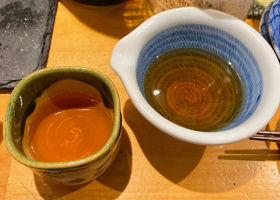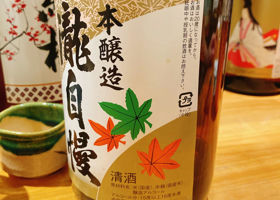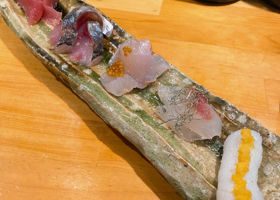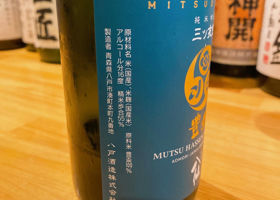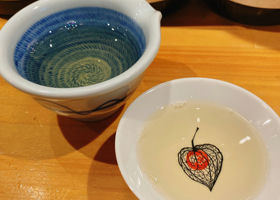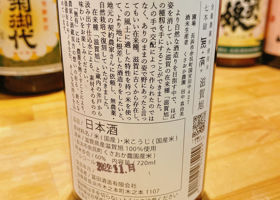Timeline
やす☆H15BY at room temperature. The color is brown.
It has a gentle burnt taste typical of long-aged sake. やす☆The first Nishikigo was served warm.
It has the mellow flavor of warmed sake, but has the crispness and sharpness of aluzoe, and is generally a bit light for a Yamahai. やす☆First time to drink Gikyo in a while at room temperature.
It has a clear, light flavor and sharpness that is typical of Gohyakumangoku. やす☆First Mino Benibai at room temperature.
It has a flat, clear and crisp taste typical of Aruzoe. やす☆Kikutaka of H29BY at room temperature.
It is mildly sweet and delicious. The sense of maturity is not felt much. やす☆The first Taki's pride and joy, Aruzoe, at room temperature.
It is refreshing, crisp, and clean. Slightly alcoholic. やす☆2019BY in warmer temperature.
Slightly yellow in color. Not bad at room temperature, but slightly acidic. Warmed up, the sweetness increases and it has a nice sharpness. やす☆I had been curious about the heated sake for a while. Naturally, it was heated.
It has the soft umami of a heated sake, but it also has a sharpness that is typical of the Kuroryu Shuzo brewery. やす☆The color is slightly yellow. It has a crisp, strong acidity, which is typical for a sake made from a sake yeast yeast yeast yeast. It was paired with sashimi (4th photo), so it was served at room temperature, but it would also be good warmed. やす☆Although it is a draft sake, it is stored at room temperature. It is not fresh, probably because it is stored at room temperature. As the label on the back says, it has a mild sweetness. やす☆The first Aruzoe of Amego no Tsuki at room temperature.
It has a refreshing feeling typical of aruzome, but also has a subtle soft umami flavor. It is well-balanced without a sense of alcohol and seems to be good as a food sake. やす☆It seems to be a home-aged Toyobai rice version of Mitsuyuue. There is no description, but it is believed to be 2020BY.
It seems to have a slight color. It has a moderate umami and finishes with a refreshing acidity. The acidity may have become stronger with the umami from aging. やす☆1996BY: Smoky and honey-like sweetness at room temperature. When heated, the caramel-like sweetness increases and it is exquisitely delicious. やす☆The only note is that it has a clear, soft flavor. やす☆It has the firmness of umami that is typical of Shichibonjari, but it also has a refreshing aluzoe flavor. やす☆The usual juiciness and the clean feeling of the alsobe. The lack of alcohol feeling is a quintessential instrument. やす☆2017BY in warmed water. The color is amber. It has a savory matured taste and a sharp taste. やす☆The color is slightly amber. Even at room temperature, it has a rather strong sweetness and a good sense of maturity.
My first intention was to drink it heated, but it was unexpectedly sweet, so I finished it at room temperature. やす☆It has a soft umami and sharpness when lukewarm. RecommendedContentsSectionView.title


